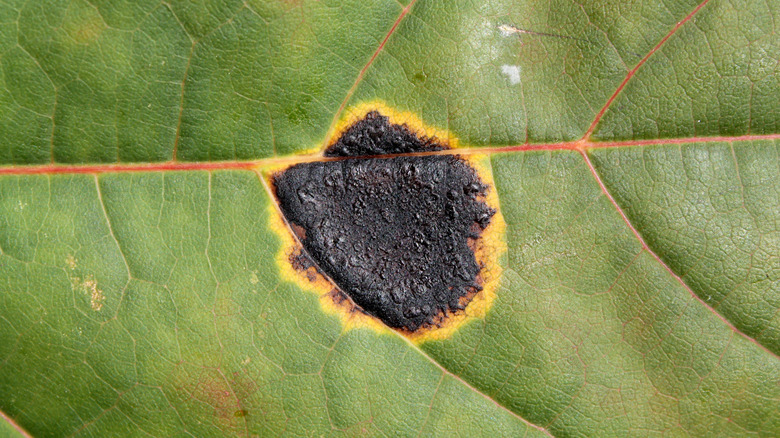Between the stunning appearance of maple trees and their widespread growth patterns, it’s no wonder are amongst the most common and notable tree species to exist. Maple trees grow in four continents — Asia, Europe, North America, and Africa — and they are known for their bright and plentiful leaves that grow in a variety of different colors. The trees also boast a sweet, tasty sap that is made into a household staple that everyone knows and loves. So, between their leaves, their sap, and their popularity, there are plenty of reasons to love maple trees.
If you have spotted a maple tree lately and taken a gander at its leaves, though, then you may have noticed something other than the vibrant shades of green, yellow, orange, and red — black patches across the upper surface of the leaves. If this threw you for a loop, well, fret not. Those patches are called maple tar spots, and they are nothing to fear.
What are the tar spots on maple leaves?

Maple tar spots are the small, black patches that can be found across the face of maple leaves. These spots typically occur in clusters, so if you only see one, then rest assured that they will soon spread. These patches are typically raised and slightly puffy to the touch. They were dubbed as “tar spots” because with their dark, jet-black color, they resemble splashes of tar across the leaves.
Wondering where they come from? Well, according to the Cornell University Plant Disease Diagnostic Clinic, maple tar spots are triggered by the plant’s exposure to fungi of the Rhytisma genus. Rhytisma fungi grow during the summer, and the fungi are most common in areas where there is a lot of rain or humidity. The fungi typically infect maple trees in early summer, beginning as pale yellow dots across the tree’s leaves. As the summer progresses, these dots become darker in color as the infection spreads, leaving an array of black patches across the leaves by the end of summer to fall.
Are maple tar spots dangerous?
Though maple tar spots can definitely be unsightly, luckily, they do not pose any harm or danger to a maple tree’s health, nor to any human that may touch infected leaves. According to the Iowa State University Horticulture and Home Pest News, maple tar spots are essentially harmless, with no documented history of adverse effects. At most, maple tar spots can sometimes contribute to early leaf drop, but a few more leaves on the ground have never hurt anyone!
However, if the spots are too annoying to bear, then you can try to neutralize them with the help of fungicide sprays. Fungicide sprays are sprays that are used to kill fungi on plants, crops, and trees. When sprayed at the right time of year, typically before the start of summer, fungicide sprays should help kill off the Rhytisma fungi that cause maple tar spots. Though fungicide sprays should aid the problem, it is important to note that they may not completely eradicate it. This is because even after a tree is sprayed, neighboring trees can still infect other with the fungi. Also, because of the average maple tree’s stature, it would be incredibly difficult to reach all of the tree’s leaves for spraying.